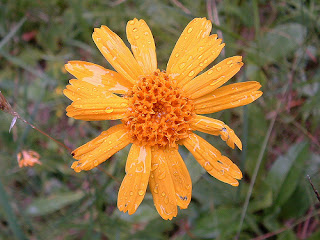When I saw the neighboring uncle sitting gloomily in his porch early in the morning, I obviously asked him what was wrong. This question changed his expression and he smiled back to me saying, “Nothing beta, just back from the laughter club and thinking what to do ahead!” At the same time, saw aunt (his wife) entering house with a huge laughter that she seemed to share with her neighbor over some gossip issue! Well, even though uncle couldn’t, I could readily sense the controversy in his own statement. Why on the earth a person visiting a laughter club would sit sullenly as if he is the reason behind the world economic crisis?
No wonder this uncle has recently undergone a bypass surgery for the closed tubes of his heart and is therefore doing everything possible to avoid the future attacks. But unfortunately he is unable to change his temperament!
I am sure he needs a good homeopathic prescription! :)
With the growing number of people visiting laughter clubs every morning, it is evident that people know the importance of laughter. Gone are the days when people used to share their happiness with those living around and the entire muhalla (lane) used to enjoy the festive atmosphere for days to come. “Things were so good then”, we hear so many times or say ourselves. But do we realize what we are jeopardizing in an attempt to seclude ourselves from societal openness? The most important thing that we have forgotten is to laugh! Sadly…
If you google, you would find hoards of quotes and SMSes related to “Smile” but there are very few comparatively for “Laugh”! It is true that smile is the concept that emerges from the heart, from the deepest of our emotions! But many times (especially in today’s corporate world), smile can be fabricated. It may be used as a weapon to avoid conversation and stay away from questions. But the person who smiles knows whether it’s genuine or not. On the contrary, laughs are usually non-fabricated. One cannot laugh heartily without really feeling like laughing.
Actually this is the reason I don’t like Laughter Clubs (no offense meant). In these clubs, what people do is ‘try to laugh’ for the sake of it. This is just decisive movement of your laughing muscles and larynx in an attempt to make a sound like laughing! Laughter clubs boast about utility of these clubs to help one with heart problems. Does it really? If this needs to be done, laughter clubs should have some genuine joke-tellers or some fun-games that would evoke natural laughter from the participants.
But still there is a problem!
Have you seen people criticizing the best of the jokes? May be either they don’t understand it or they feel too proud to laugh at a joke! Their grim faces ooze proud (or foolishness!?) that they took even the joke lightly and didn’t allow their face to budge! Now that makes me laugh… I am sure this pride is going to sit around their heart and make their arteries go fatter!
Why can’t we allow ourselves to enjoy the most natural expression ‘laughter’? Is it bad to express? If tears are the expression of joy, sorrow, sympathy, empathy, and love, laughter is an expression of sheer joy!! If tears are important in our life to shed the heavy weight on heart, laughter does the same task more easily and subtly. Laugh at every instance you can. Your family is your best friend. Share your ideas with them. Pick out on your own inhibitions, inferiorities, and feel proud to make fun of it. It is said that there is no as good catharsis as talking about one’s own inadequacies. Why hold back ourselves? Read fun books, read fun jokes, create your owns and send your friends, and enjoy the feeling of laughter you spread around! Make it contagious!
No need of scientific evidences to tell us the importance of laughter and that it helps our heart to function smoothly! Laugh and you will find that your chest is expanding like never before and you can feel the rush of fresh air that enters your body with each laugh!
Laughter that comes from heart and helps the heart is truly worth! Try it!



